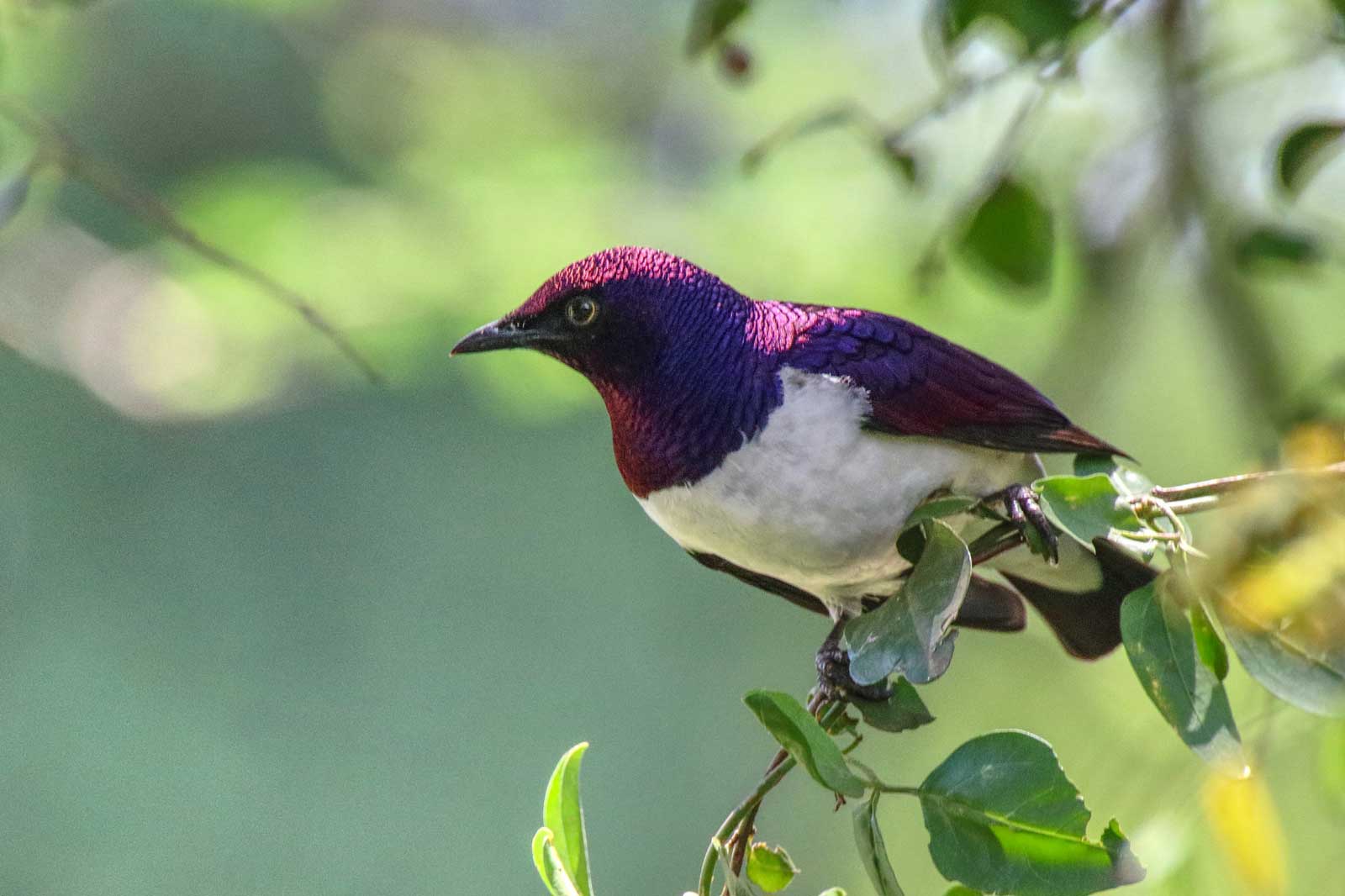You know who you are: If the mysterious sound of an unknown bird call rings out from the bush and stops you dead in your tracks, or a flutter of feathers you don’t recognise rustles in the thicket, making you sweat with excitement; or a flight pattern that is not familiar to you takes shape overhead and sends you running for your binoculars; you’re one of us. A Bird Nerd is a self-proclaimed title for those of us who are passionate about birdwatching on safari, or just in our own back gardens (or on the street, at a coffee shop, watching TV, family lunches, sitting in traffic, etc.), and we are dead set on identifying birds we don’t know.
It starts with the urgency to state the ID of a bird or its call if we are sure we know it, otherwise it becomes somewhat of an obsession to note its specific shape, colour, behaviour, and sound, and (best case scenario) get a photo of the unidentified flying object before meticulously anlaysing the pages of the LBJs (little brown jobs) and hopefully landing a positive ID. If you are not a Bird Nerd, you won’t understand the level of unwelcome torment brought on by the inability to positively identify a new bird…
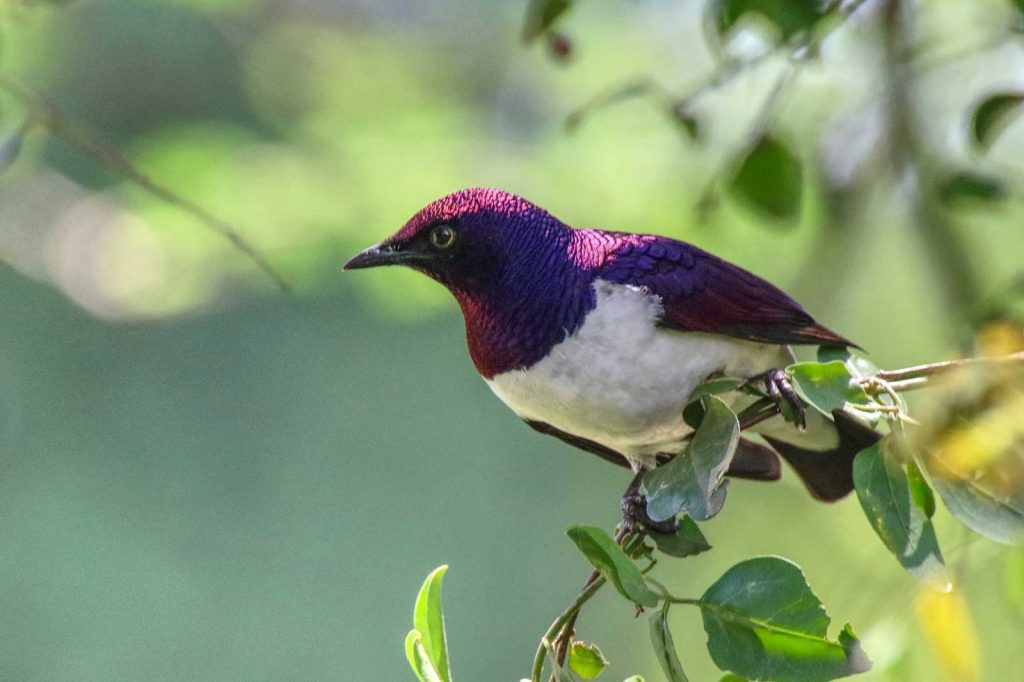
When our recent guest, Nik Simpson, returned from his East Africa safari, he produced albums upon albums of fantastic wildlife photos, proving just what a fantastic safari he had, and in among his big cat photos was an album of birds! Delighted, we are sharing those photos here in this blog, coupled with a fun fact or two about each of these superb and fascinating creatures! Take a look at Nik’s Flickr account for his complete reel of safari photos, here.
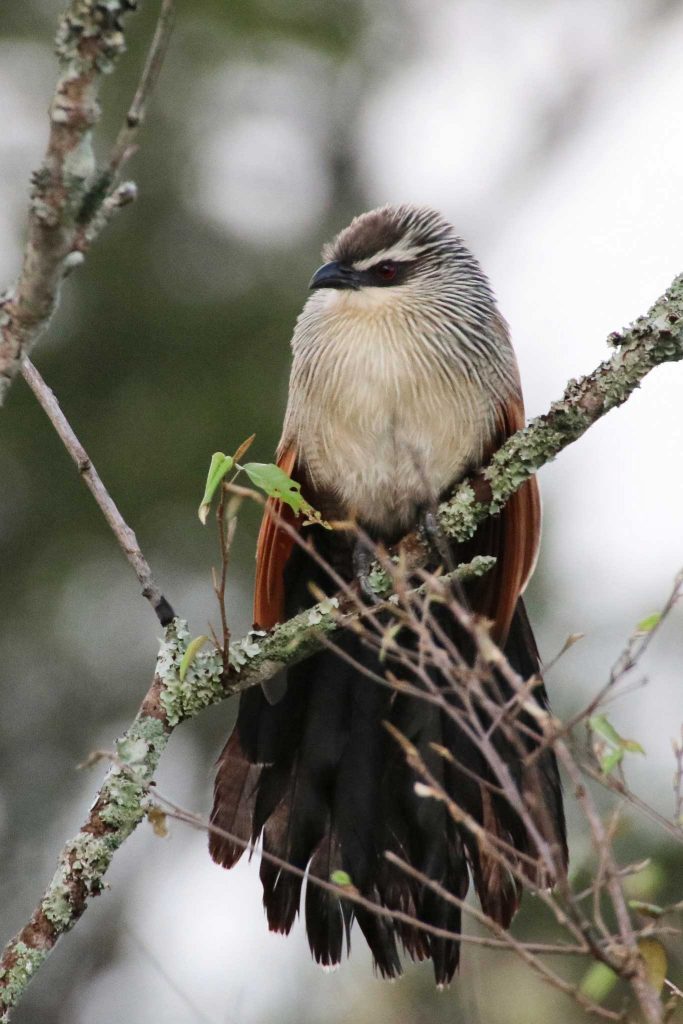
The white-browed coucal captured here in a totally fluffed up state has some remarkable patterns on its face. In addition to its unmistakable ‘eyebrows’, this coucal is covered in streaky feathers around its neck, and a deep chestnut body with almost black tail feathers. The coucals have a beautiful liquid-sounding call, which rings out like an echo before rain is expected to fall, This, according to South African lore, has given these birds the name “rain bird”. If you see a white-browed calling (tricky, as they are often hidden in long grass or reeds), you’ll notice it hugs its bill to its chest and its move in and out rapidly, feathers vibrating. It’s a full body workout!

The white-bellied bustard. This fantastic photo was captured as a male was calling loudly, which gives us a nice look at his “beard” of dark feathers under his beak. A pretty combination of colours with a grey-blue neck and striking facial markings make it unmistakably part of the bustard family, which shares genes with the korhaan family. The white-bellied is on the small side when compared to other bustard members, but its very loud and gutteral vocals make up for it!
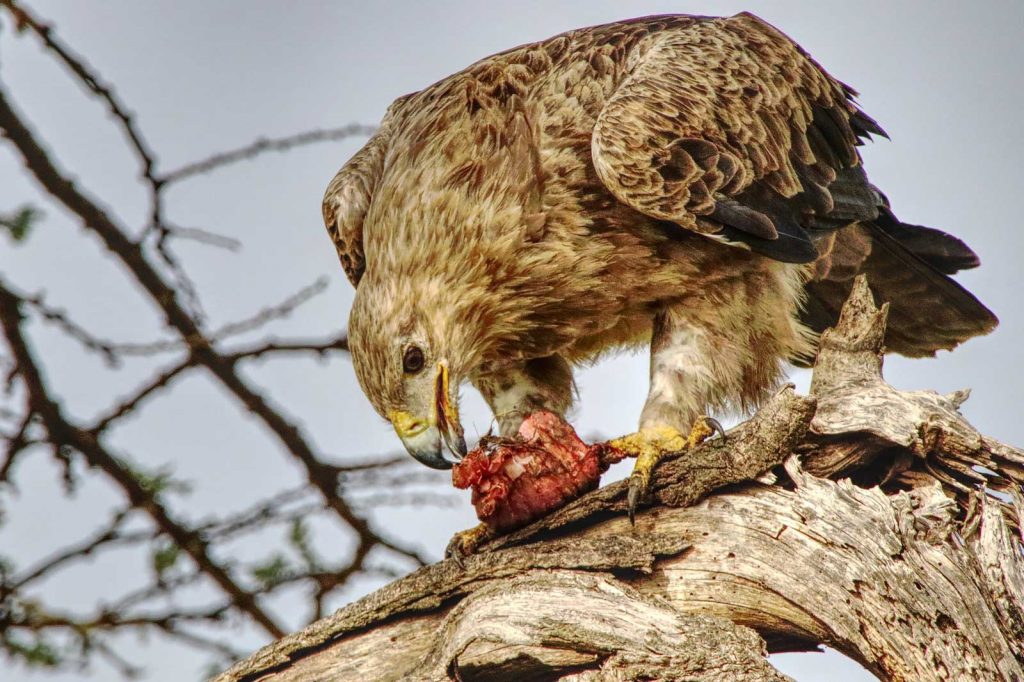

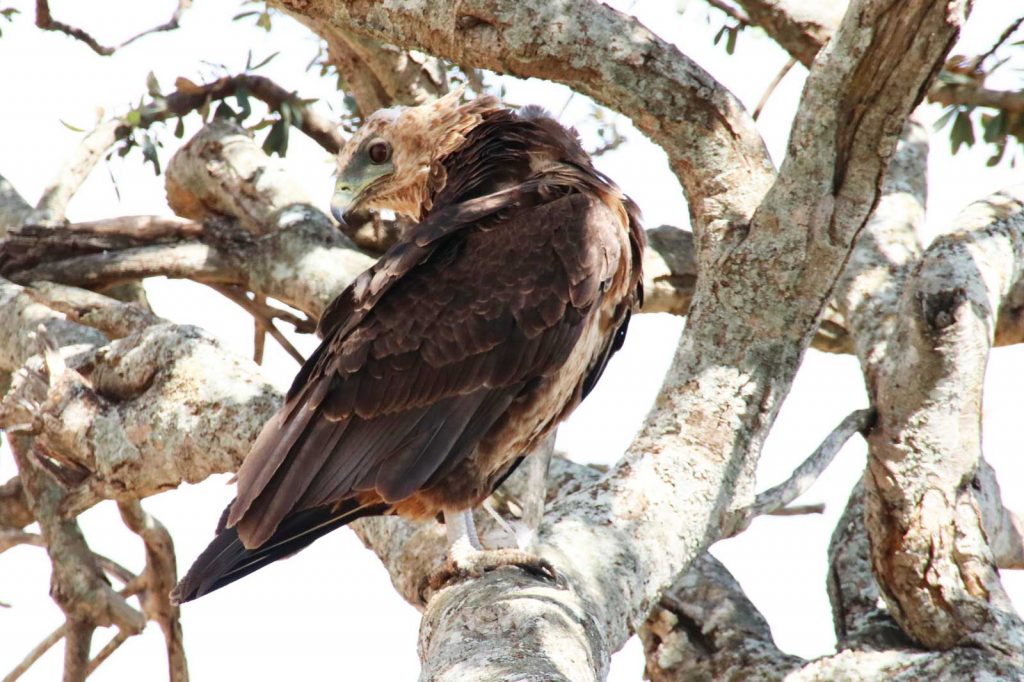
A superb collection of eagle images from the Masai Mara show that the reserve’s famous predator activity is not limited to terrestrial hunters! These three eagles are large (the martial being the largest), and unmistakable when spotted (to the Bird Nerds, that is!). In this series of photos, it is clear to see how the juvenile bateleur is much more easily mistaken for a tawny eagle or a brown snake eagle. When it reaches maturity it will shed its brown feathers and produce some of the most striking, jet black feathers in the animal kingdom. Once a bateleur is in full adult colour, it is the most outstanding of the eagles, with bright red feet and face, ending in a yellow-tipped beak.
The martial eagle is undeniably enormous (it is the largest African eagle), with a wingspan over 6 feet, and weighing in at over 6kg. It has a crest on its head, bright yellow eyes, and a magnificent “freckled” chest. Unsurprisingly, the martial eagle has been known to swoop down and prey on animals as large as young impalas, ground fowls, monkeys, hyraxes, and small cats and other mammals. A substantial diet for a substantial eagle!
The tawny eagle is one of the largest brown eagles, and it produces many different colour morphs, so seldom look exactly the same if we are going on colouration. Standard are the yellow and black beak, yellow feet, fully feathered legs, and common occurance. Sometimes, we see very dark brown – almost black – tawny eagles, and other times we see the pale morph, which is almost white in colour.
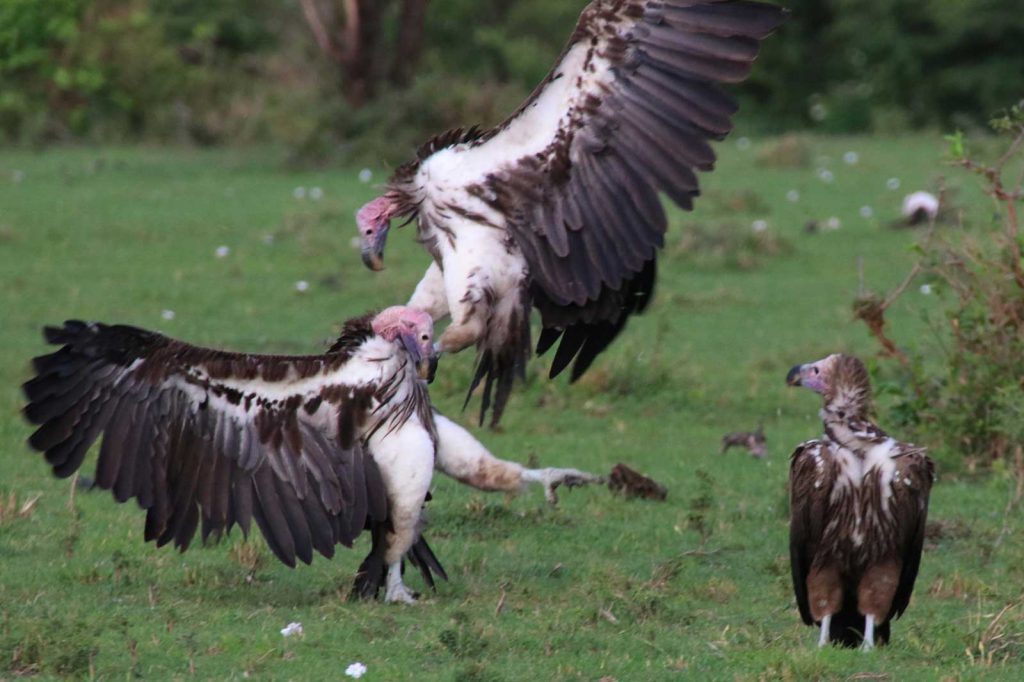
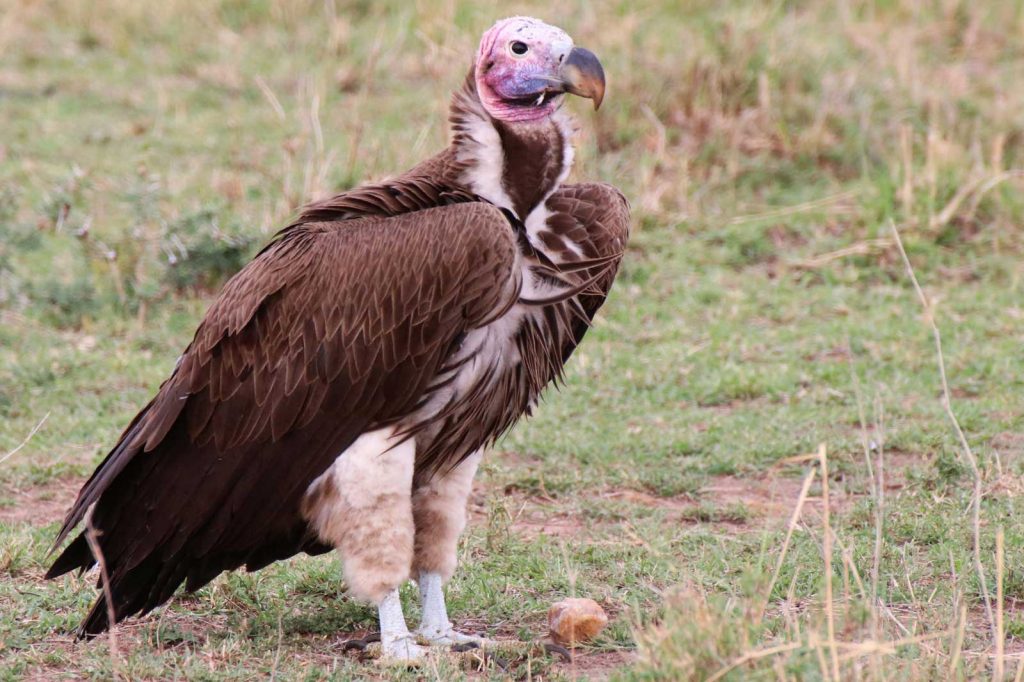
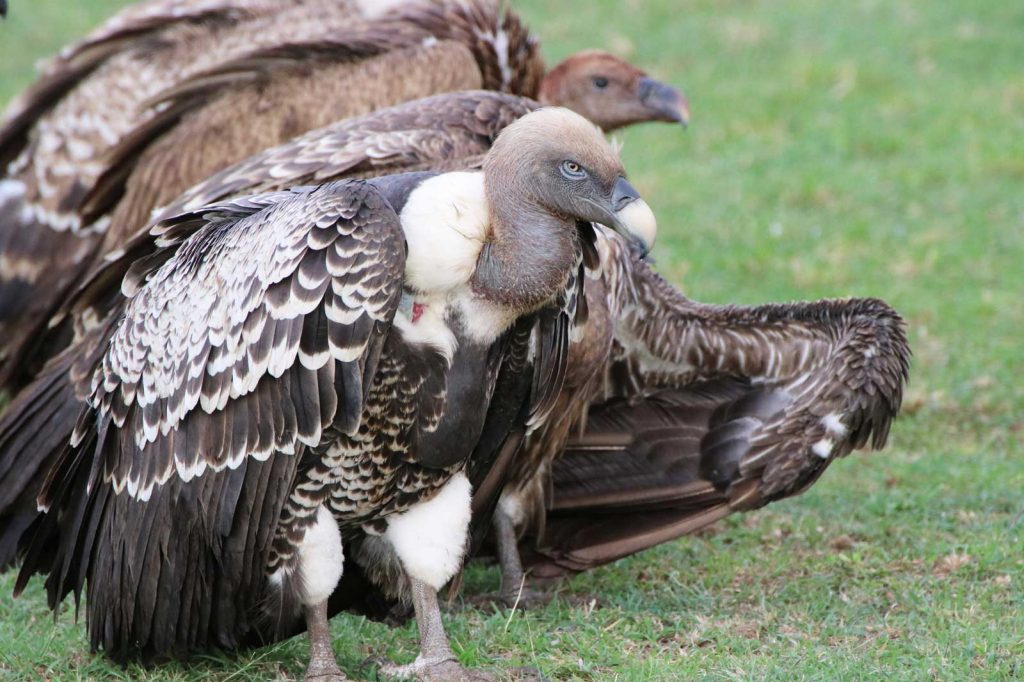
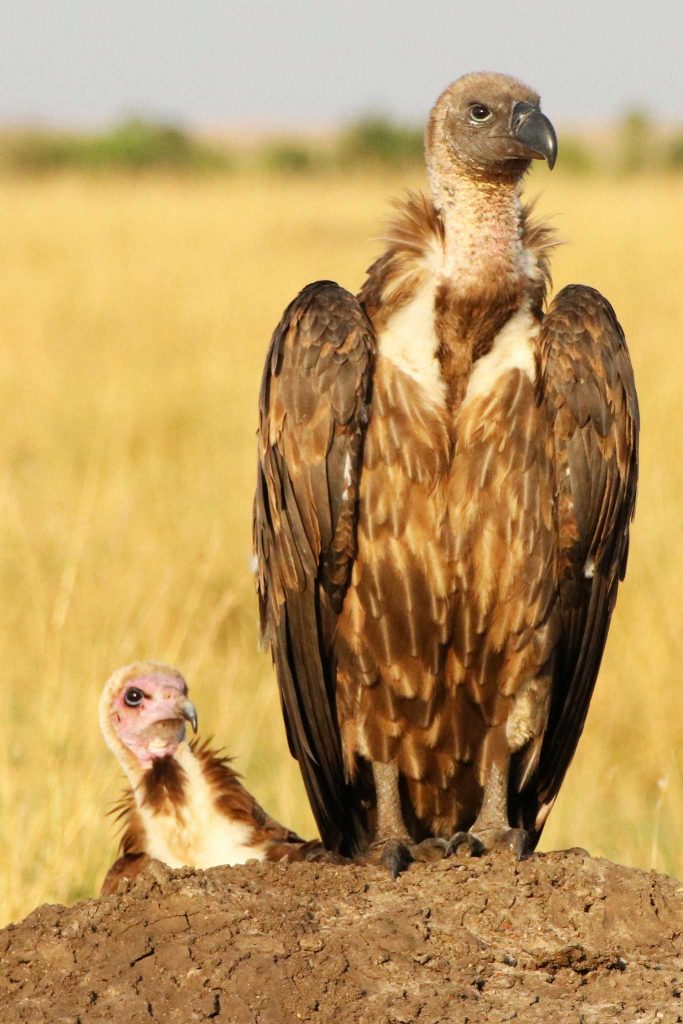
From the birds of prey to the scavengers: vultures! The birds with perhaps the worst reputation (alongside that of the notoriously unattractive marabou stork), are hardly deserving of their unofficial title. Vultures are crucial to the health of the ecosystems they live in, as they control the spread of disease by cleaning carcasses so thoroughly. Sadly, the vultures’ craving for carion has led them to a devastatingly uncertain future. The world’s vulture populations are dimishing rapidly as the rise of poaching of other animals increases (elephants for their tusks, rhinos for their horn, lions for their bones). Vultures swoop down to feast on the rotting flesh of an animal and unknowingly consume poison poachers have used to kill the animal in the first place. We are hopeful that the vulture protection programmes, including nesting aides, will encourage their population growth and counter the sad loss of these important birds.
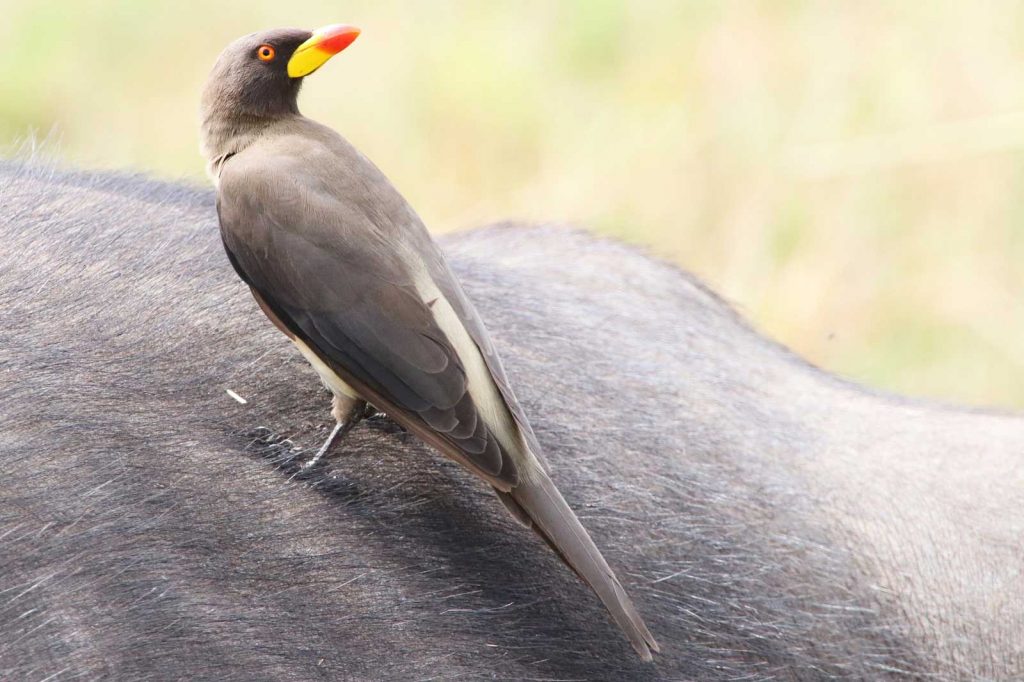
The instantly recognisable oxpecker is one even the Bird Nerds will know. This little bird is a constant companion to most large herbivores, as it lives off the ticks and other parasites that embed themselves in the hide of elephants, buffalo, warthog, rhino, and antelope. A herd of grazers or browsers is hardly complete without the noisy presence of the yellow- and red-billed oxpeckers!
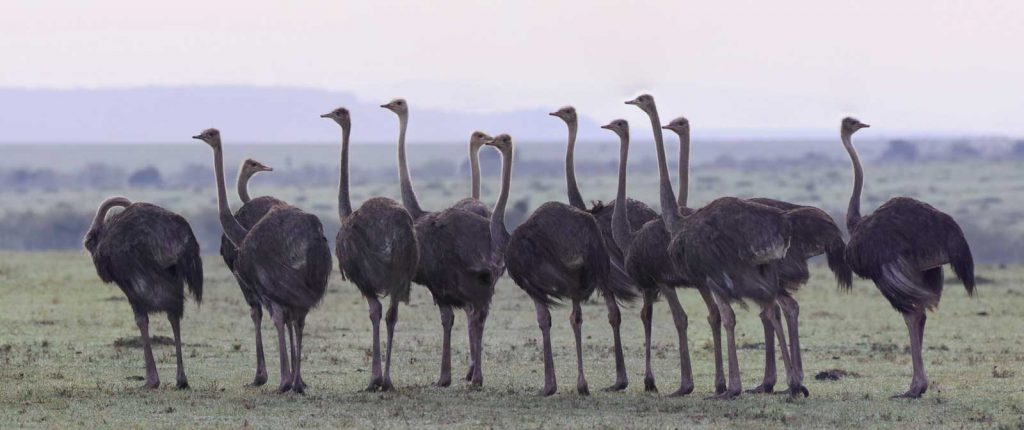
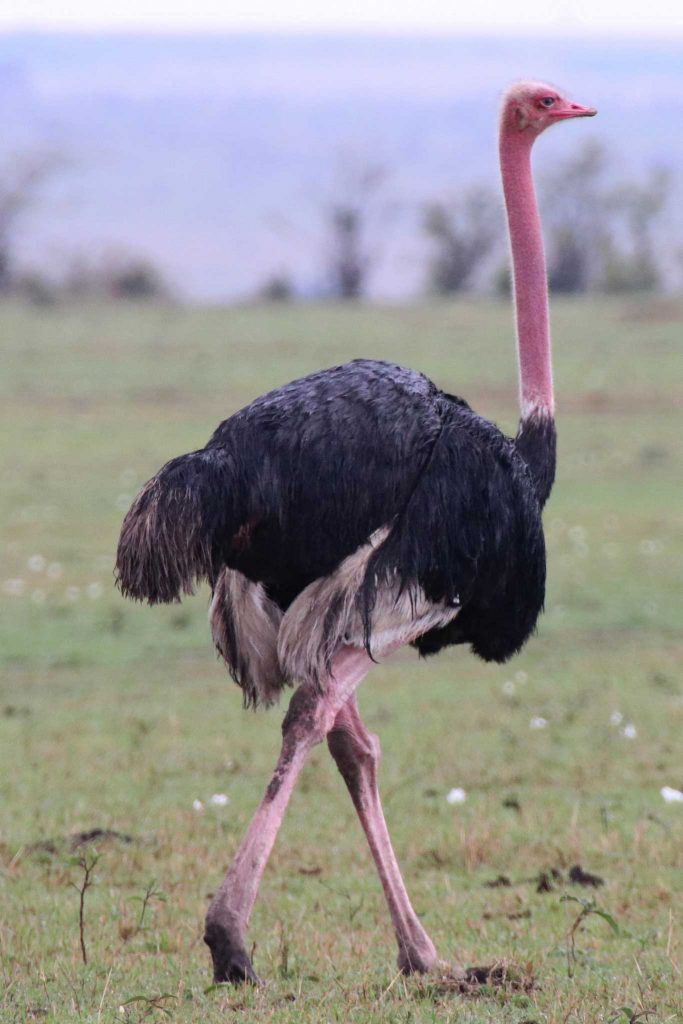
The comical ostrich has perhaps the most elaborate of mating displays (which is saying a lot, because many birds have the most outstanding mating dances and courtship displays in the animal kingdom). Male ostriches have rich, black feathers with white ‘petticoats’, while females are much more dull with a brown-grey set of feathers. These ostriches are the Masai ostriches, or pink-necked ostrich, which is rather an appropriate name. These are the world’s heaviest birds. They can not fly, but they can run very fast (reaching about 70km/h), and possess rather a nasty kick, which acts as a good defense against predators.
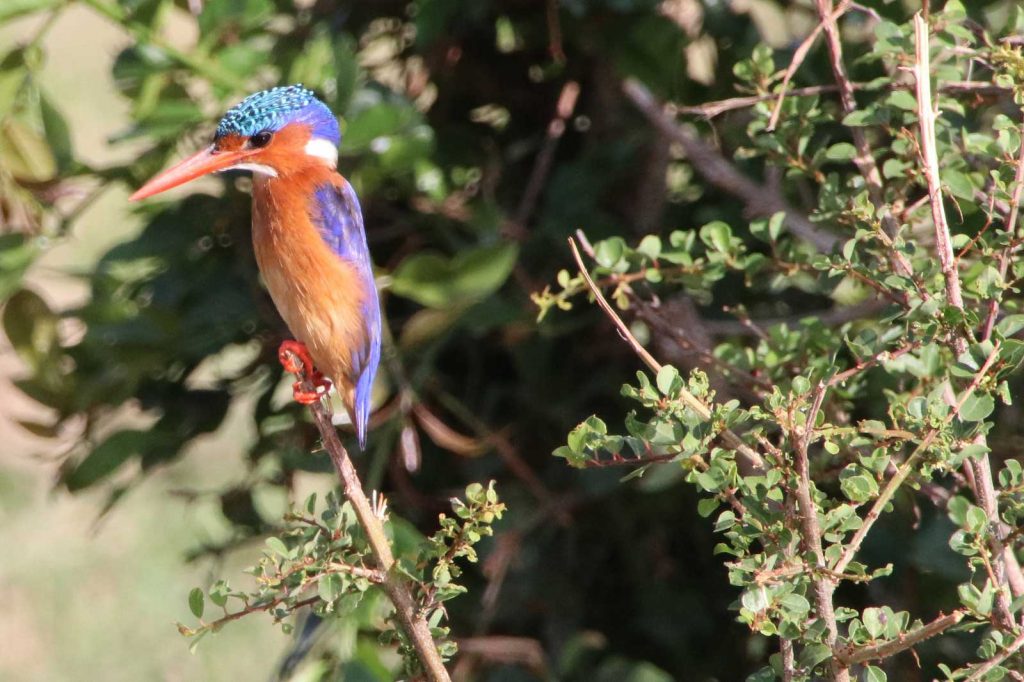
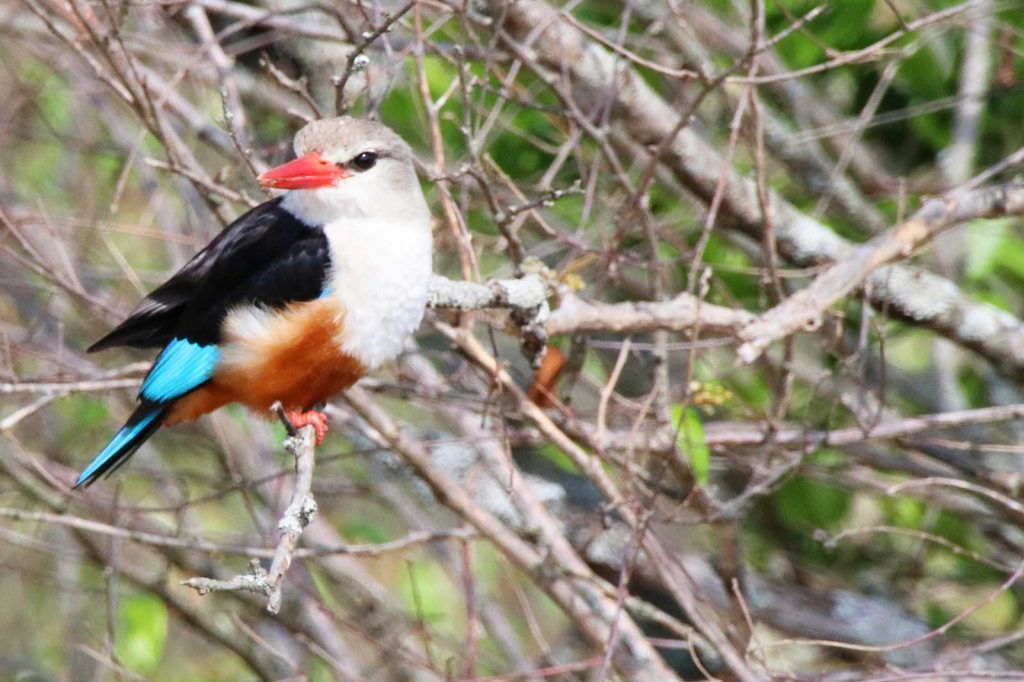
Colourful kingfishers are always worth stopping the game drive vehicle for (yes, we stop for birds). Their colours are outstanding: jewel-like tones, irridescent shine, bright bills, and distinctive patterns. The giant kingfisher is quite unlike the rest, as it is much larger and is black and chestnut in colour, while the more diminutive kingfishers exude supreme colour palettes. Captured in these photos by Nik are the malachite kingfisher – always seen in reed beds or clinging to tall grass alongside water – and the grey-headed kingfisher, which, in fact, doesn’t eat fish at all, and prefers to stick to the bush further inland where it preys on insects and the like (and you thought “kingfisher” was an easy one…)
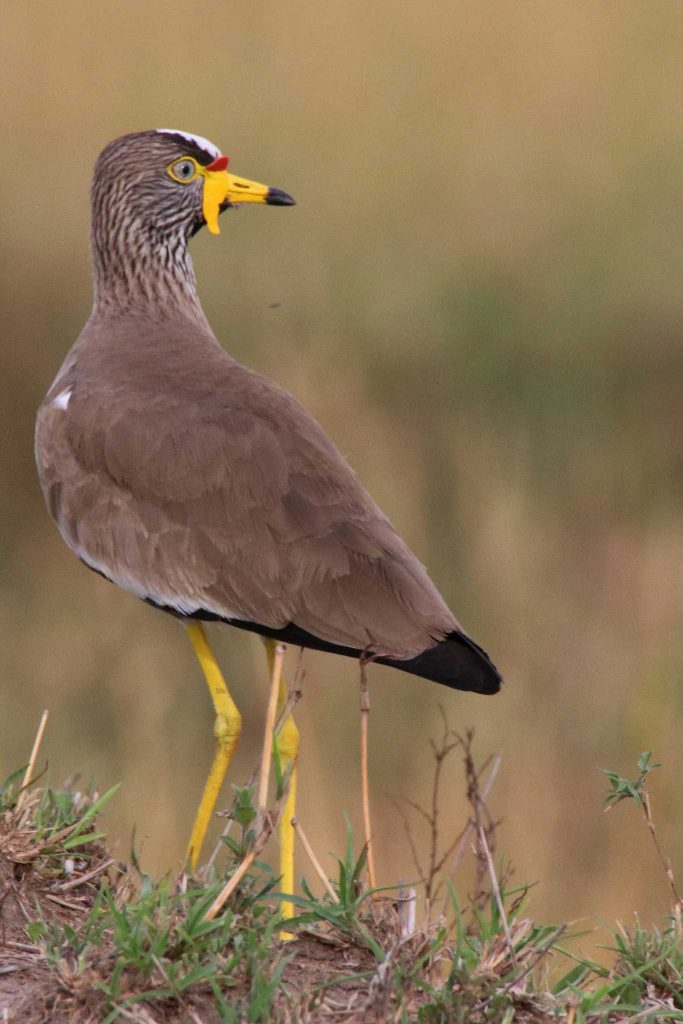
Ending off with this bold and beautiful character: the African wattled lapwing. Quite self-explanatory in its name, this bird has a yellow and red wattle decorating its face, like a piece of tribal jewellery, or traditional make up, while its head is adorned with a regal looking crown of white feathers, and its neck is flecked with a uniform pattern of dark streaks. What a looker to end off this compilation of weird and wonderful birds of the Masai Mara!

